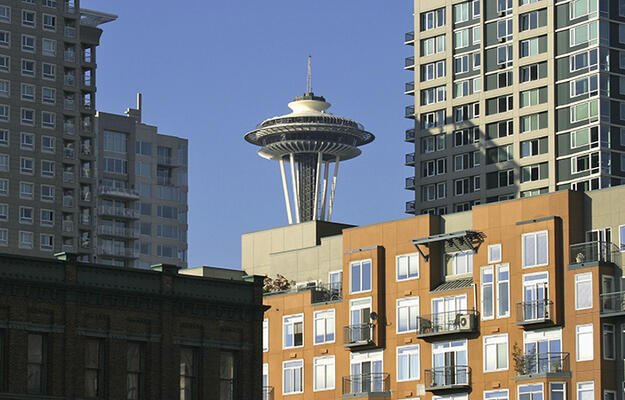
Treating Sleep Disorders? Home & Neighborhood Conditions Matter
- Title:
- Treating Sleep Disorders? Home & Neighborhood Conditions Matter
- Author:
-
Earle C. Chambers, Margaret S. Pichardo, Emily Rosenbaum
- Source:
-
Behavioral Sleep Medicine
- Publication Date:
-
2014
Too little or too much sleep is associated with poor nutrition, cardiovascular disease, and obesity. Are sleep problems affected by where people live? Research published in the journal Behavioral Sleep Medicine demonstrates that housing and neighborhood conditions greatly impact sleep and its associated health outcomes. Using data from the Affordable Housing as an Obesity Mediating Environment (AHOME) study, Chambers, Pichardo and Rosenbaum analyzed how long respondents slept, their sleep quality, the frequency of sleep disturbances, and how often it took them more than thirty minutes to fall asleep. These sleep factors were compared with household crowding, 12 types of neighborhood disorder, and 8 aspects of their apartment building.
The 12 neighborhood environment characteristics, shown in the list that follows, were all self-reported and then combined into an overall neighborhood score:
- vacant lots with trash and junk
- litter, broken glass, or trash on sidewalks or streets
- people fighting or arguing
- vacant or deserted housing or storefronts
- inadequate police protection
- loud noises
- people selling or using drugs
- groups hanging out or causing trouble
- graffiti
- vandalism
- assaults
- drinking in public
Similarly, a building environment score was created out of self-reports on the following 8 aspects of the apartment building:
- unpleasant smells outside of your apartment
- noise that keeps you awake or wakes you up
- litter, broken bottles, or trash in common areas, halls, or entry
- graffiti on inside or outside walls
- unfriendly neighbors
- inadequate security for controlling building access
- dark stairwells
- dirty stairwells
The data comes from survey responses of 385 low-income Latino adults living in housing units in the South and West Bronx neighborhoods of New York City. 38% reside in public housing, 30% receive housing assistance through Housing Choice Vouchers, and 32% do not receive either form of housing assistance.
Major findings:
- The ability to fall asleep, stay asleep, and sleep soundly is associated with the quality of people's living environments. Factors that may affect sleep include loud noises around the apartment building and the perception of safety both inside and outside the building.
- Negative health outcomes associated with living in disadvantaged neighborhoods may be partly due to sleep problems related to the neighborhood and building environment.
- Participants in public housing report significantly higher levels of neighborhood disorder than those using vouchers or those without rental assistance.
- Sleep disturbances are associated with neighborhood disorder and building problems. The likelihood of sleep disturbances is even higher when extreme levels of neighborhood and building problems are combined. Current smokers, women, Housing Choice Voucher recipients, and people with physical limitations also were more likely to report sleep disturbances.
- Poor sleep quality is associated with neighborhood disorder, building problems, and extreme levels of both combined. Poor sleep quality is also associated with being female, having physical limitations, and completing the survey in Spanish.
- Difficulty falling asleep is significantly associated with building problems but not neighborhood disorder. However, when extreme levels of neighborhood and building problems are combined, people are significantly more likely to report difficulty falling asleep. Other associated factors include having physical imitations or completing the survey in Spanish.
- Neighborhood and building factors are not significantly associated with the amount of time people sleep.
- Living in a crowded home significantly reduce the odds of sleeping too long (i.e., more than 8.5 hours/night). It does not, however, appear to affect sleep quality, sleep disturbances, or difficulty falling asleep. Renters without federal assistance were the most likely to experience crowding.


